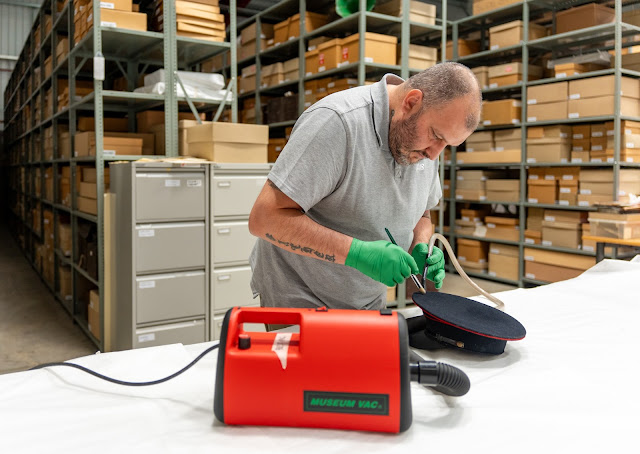Volunteer Journey at Wakefield Museums
This article delves into a volunteer experience at the museum store in Wakefield, where a university student engaged with various museum projects dedicated to preserving artifacts.
Overview of the Experience
The experience began with the volunteer’s background as a student specializing in preventative conservation, which focuses on the careful preservation of museum objects. The initiative was designed to blend theoretical knowledge with practical application by working hands-on within the museum’s environment.
Initial Work Tasks and Projects
During the volunteering, several projects were undertaken to understand better how to display and preserve important items within the museum. A major focus was assessing light levels in display cases, which is crucial for protecting sensitive artifacts from potential damage caused by excessive brightness.
The volunteer began by identifying light-sensitive objects within the museum. Utilizing a collections database, they determined how long each item had been on display, as prolonged exposure to light can lead to irreversible fading or deterioration. The role required regular monitoring of light intensity levels, ensuring they remained safe for artifact exposure.
Understanding Light Sensitivity
The light levels were measured using a light meter, which quantifies brightness in lux. Different materials react differently to light, and therefore tailoring preservation techniques was vital. Objects most susceptible to light damage were cataloged, allowing staff to plan rotations and switch them to dark storage once they exceeded safe display durations.
Ensuring correct light levels is vital for preserving artifacts in display cases. |
Unconventional Food Collections
An interesting aspect of museum conservation included examining food items in the collection. While one might think food shouldn’t be part of a museum, certain historical food treasures play a significant role in cultural understanding. For instance, a preserved hot cross bun from the Crimean War showcases culinary history and soldier life.
This nearly 200-year-old hot cross bun offers a glimpse into historical eats! |
Identifying these food items came with its challenges. The volunteer had to confirm their condition, determining if they were still in sealed packaging or required special considerations due to potential decay. The main goal was ensuring that no pests could access these valuable items, thus maintaining their condition over time.
A historical food item, safely repackaged for preservation. |
Storage Solutions and Future Considerations
To protect these items, they were placed in sealed containers alongside humidity indicators and silica gel packs that absorb moisture. This approach helps prevent deterioration due to humidity fluctuations, ensuring longevity in storage.
Regular checks on food items were necessary. This included getting rid of items that posed risks—like outdated snacks that no longer held their integrity, yet the packaging might be preserved for historical value.
What happens to out-of-date foods? Approved disposal methods were employed for items such as old crisps. |
Acknowledgements
Gratitude was extended to the museum staff, whose support and mentorship transformed the volunteer’s experiences into meaningful professional development opportunities. Their guidance played a key role in advancing knowledge within the realm of artifact conservation, rooted in practical application alongside theoretical study.
Reflections on the Experience
This volunteer opportunity provided insights into the careful balance of preserving cultural heritage while being practical about resource management. It illuminated the importance of such roles within museums and the rich history embedded in each item, including the unlikely inclusion of food artifacts.
For travelers, these museum visits provide unique perspectives on culture and history. Understanding the value of preservation goes hand-in-hand with exploring destinations. When planning a journey, having reliable transportation plays a pivotal role, and platforms like LocalsRide.com offer tailored transfers and vehicle choices, ensuring travel goes smoothly. Users can choose specific vehicles based on ratings and drivers, greatly enhancing the travel experience.
All in all, volunteering within the museum system is not merely about service; it’s about enriching cultural understanding and ensuring artifacts remain available for public enjoyment. The hands-on involvement distinctly illustrates the role of dedication in the preservation process—experiences that enhance overall travel within historic locations. Visitors interested in museums will find engaging sessions awaiting them at various destinations, complemented seamlessly by the conveniences and reliable services offered by platforms like LocalsRide.
When reflecting on these experiences, it’s evident that even the most meticulously documented history cannot replace personal experiences of travel and exploration. With LocalsRide, travelers can select rides from verified providers at accessible prices, allowing for well-informed decisions without financial surprises. Explore the vast array of vehicles and options available at LocalsRide.com.
Book your ride today and enjoy the best travel experiences Globally!

